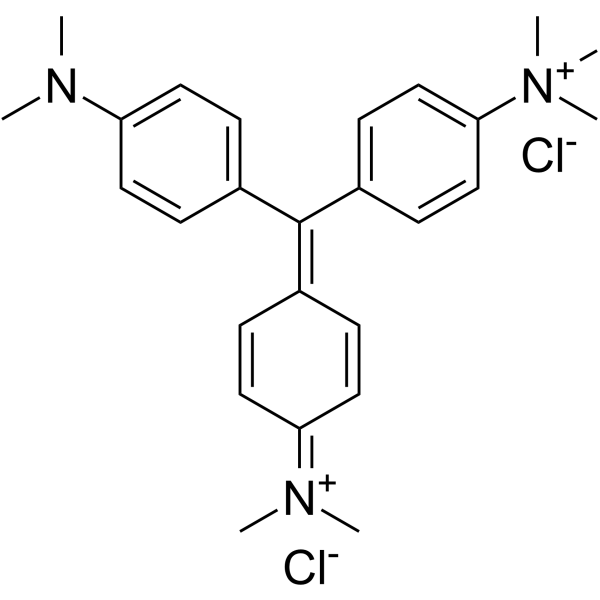Basic Blue 20
Modify Date: 2025-08-25 16:16:14

Basic Blue 20 structure
|
Common Name | Basic Blue 20 | ||
|---|---|---|---|---|
| CAS Number | 82-94-0 | Molecular Weight | 458.46600 | |
| Density | N/A | Boiling Point | N/A | |
| Molecular Formula | C26H33Cl2N3 | Melting Point | N/A | |
| MSDS | N/A | Flash Point | N/A | |
Use of Basic Blue 20Basic Blue 20 is a very convenient red-emitting DNA stains. Basic Blue 20 has relatively narrow excitation and emission spectra, with peaks at 633 and 677 nm, respectively. Basic Blue 20 also has a very high resistance to photobleaching[1]. |
| Name | methyl green |
|---|---|
| Synonym | More Synonyms |
| Description | Basic Blue 20 is a very convenient red-emitting DNA stains. Basic Blue 20 has relatively narrow excitation and emission spectra, with peaks at 633 and 677 nm, respectively. Basic Blue 20 also has a very high resistance to photobleaching[1]. |
|---|---|
| Related Catalog | |
| References |
| Molecular Formula | C26H33Cl2N3 |
|---|---|
| Molecular Weight | 458.46600 |
| Exact Mass | 457.20500 |
| PSA | 6.25000 |
| 4-{[4-(dimethylamino)phenyl][4-(dimethyliminio)-2,5-cyclohexadien-1-ylidene]methyl}-n,n,n-trimethylanilinium dichloride |
| [4-[[4-(dimethylamino)phenyl]-(4-dimethylazaniumylidenecyclohexa-2,5-dien-1-ylidene)methyl]phenyl]-trimethylazanium,dichloride |
| C.I. BASIC BLUE 20 |
| Basic Blue 20 |
| Double green |
| Methyl green chloride |
| EINECS 201-447-6 |
| Light green |